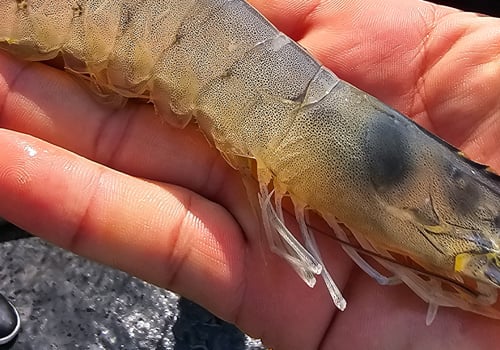
Broodstock stage
Focus on reproduction, egg quality, and minimizing mortality
Main target in this stage
Shrimp reproduction and broodstock management
After reaching sexual maturity, the juvenile shrimp transitions into the adult stage. The timing of sexual maturity varies by shrimp species. Adult shrimp are fully developed and capable of reproducing. They engage in mating, egg production, and the continuation of the life cycle. The key goal for brood stock is to produce plentiful, high quality eggs. As high quality brood stock is expensive, mortality should be kept to a minimum.
Feed your brood stock for health and productivity
For optimal health and productivity, broodstock require a nutrient-rich diet combining high-quality formulated feeds with fresh feeds like polychaetes, squid, and mollusks. Be careful with potential pathogen diseases when feeding fresh feed. Their diet should be rich in vitamins, minerals, and omega-3 fatty acids to support reproduction and overall vitality. Proper feeding enhances egg quality, hatch rates, and larval survival, ensuring a strong next generation.
Avoid mortality with optimal management
Broodstock shrimp are valuable animals. Therefore, mortality should be absolutely minimized as this leads to large economic losses and may even lead insufficient shrimp for the next production cycle. Use the best farm management practices to the highest level: Maintain optimal water quality, provide proper nutrition, enforce biosecurity, reduce stress, monitor health regularly, and implement disease prevention.
How to select broodstock?
Broodstock should be of good genetic quality and you can select based on: SPF (Specific Pathogen Free), SPR (Specific Pathogen Resistant), APF (All Pathogen Free) broodstock are free from all known pathogens, ensuring a clean genetic pool and APR (All Pathogen Resistant). The choice depends on your farm environment and needs. Special caution is necessary for wild broodstock, particularly monodon species, to prevent potential pathogen transfer during handling and transportation.